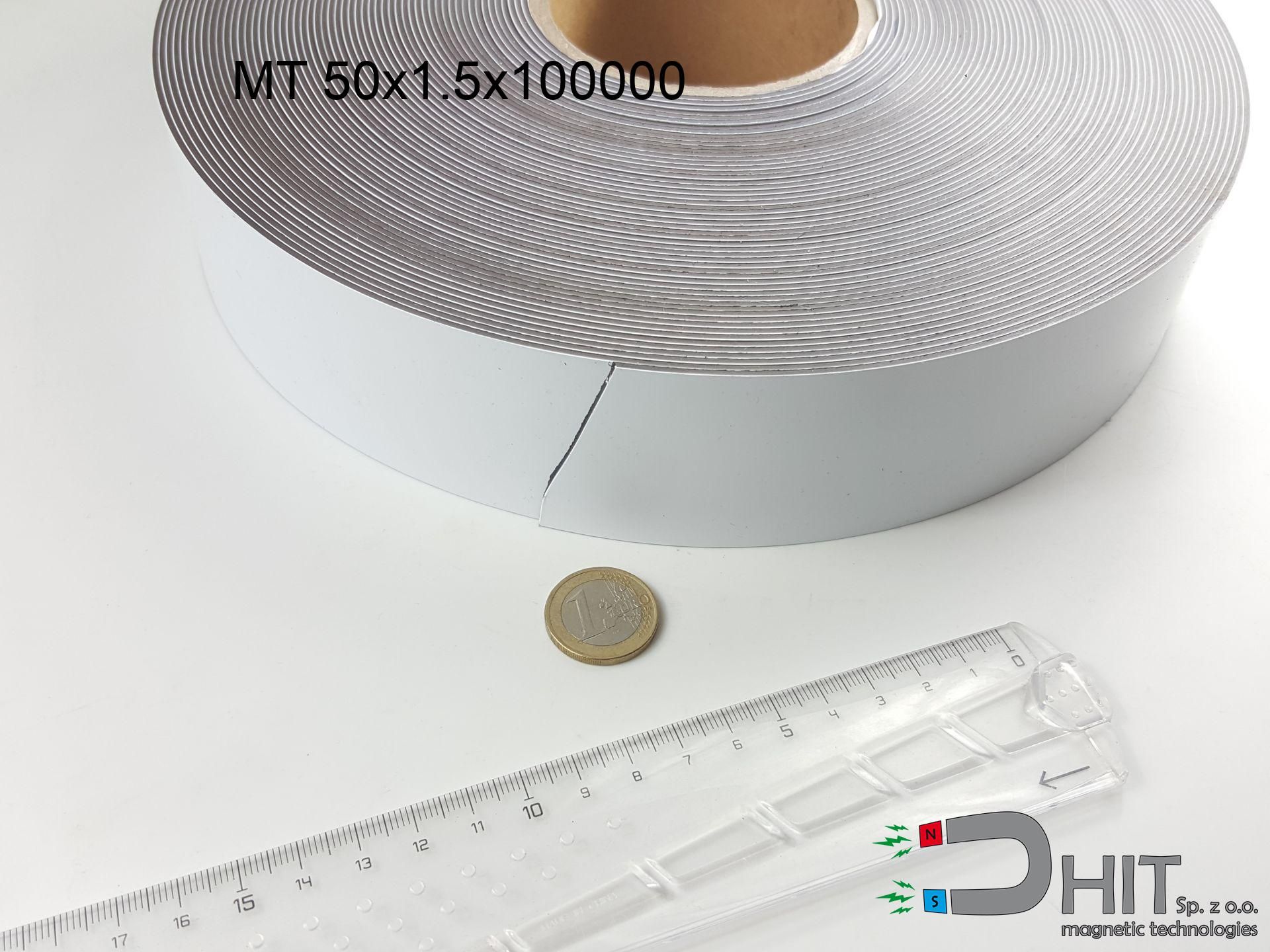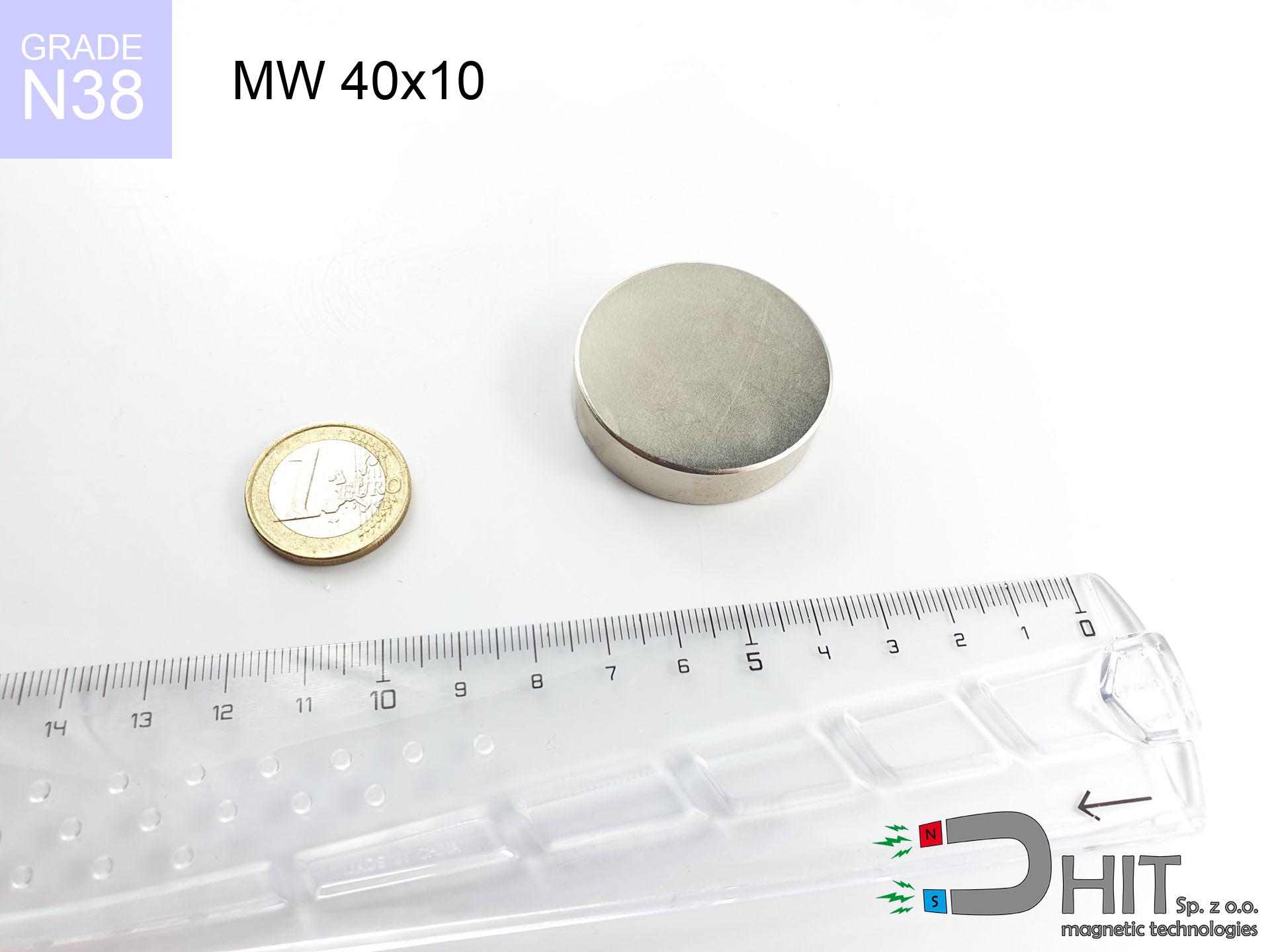MT 50x1.5x100000 - magnetic tape
magnetic tape
Catalog no 380512
length
50 mm [±1 mm]
Width
1.5 mm [±1 mm]
Height
100000 mm [±1 mm]
861.00 ZŁ with VAT / pcs + price for transport
700.00 ZŁ net + 23% VAT / pcs
bulk discounts:
Need more?Not sure what to buy?
Pick up the phone and ask
+48 22 499 98 98
or let us know through
our online form
the contact section.
Parameters as well as structure of magnets can be reviewed with our
online calculation tool.
Orders placed before 14:00 will be shipped the same business day.
MT 50x1.5x100000 - magnetic tape
Specification / characteristics MT 50x1.5x100000 - magnetic tape
| properties | values |
|---|---|
| Cat. no. | 380512 |
| Production/Distribution | Dhit sp. z o.o. |
| Country of origin | Poland / China / Germany |
| Customs code | 85059029 |
| length | 50 mm [±1 mm] |
| Width | 1.5 mm [±1 mm] |
| Height | 100000 mm [±1 mm] |
| Manufacturing Tolerance | ±1 mm |
Magnetic properties of material
| properties | values | units |
|---|
Physical properties of sintered neodymium magnets Nd2Fe14B at 20°C
| properties | values | units |
|---|---|---|
| Vickers hardness | ≥550 | Hv |
| Density | ≥7.4 | g/cm3 |
| Curie Temperature TC | 312 - 380 | °C |
| Curie Temperature TF | 593 - 716 | °F |
| Specific resistance | 150 | μΩ⋅Cm |
| Bending strength | 250 | Mpa |
| Compressive strength | 1000~1100 | Mpa |
| Thermal expansion parallel (∥) to orientation (M) | (3-4) x 106 | °C-1 |
| Thermal expansion perpendicular (⊥) to orientation (M) | -(1-3) x 10-6 | °C-1 |
| Young's modulus | 1.7 x 104 | kg/mm² |
Check out more offers
Strengths as well as weaknesses of NdFeB magnets.
Apart from their consistent magnetic energy, neodymium magnets have these key benefits:
- They have constant strength, and over more than ten years their attraction force decreases symbolically – ~1% (in testing),
- Magnets effectively protect themselves against demagnetization caused by external fields,
- By covering with a decorative coating of gold, the element gains an professional look,
- They feature high magnetic induction at the operating surface, making them more effective,
- Due to their durability and thermal resistance, neodymium magnets can operate (depending on the shape) even at high temperatures reaching 230°C or more...
- Considering the possibility of precise molding and adaptation to custom solutions, magnetic components can be manufactured in a variety of geometric configurations, which makes them more universal,
- Fundamental importance in modern technologies – they serve a role in data components, electromotive mechanisms, medical equipment, and industrial machines.
- Thanks to efficiency per cm³, small magnets offer high operating force, with minimal size,
Disadvantages of NdFeB magnets:
- To avoid cracks upon strong impacts, we recommend using special steel holders. Such a solution secures the magnet and simultaneously increases its durability.
- We warn that neodymium magnets can reduce their strength at high temperatures. To prevent this, we recommend our specialized [AH] magnets, which work effectively even at 230°C.
- Due to the susceptibility of magnets to corrosion in a humid environment, we advise using waterproof magnets made of rubber, plastic or other material immune to moisture, when using outdoors
- Due to limitations in creating threads and complex shapes in magnets, we propose using a housing - magnetic mount.
- Potential hazard resulting from small fragments of magnets can be dangerous, if swallowed, which becomes key in the context of child health protection. Additionally, small components of these devices can be problematic in diagnostics medical after entering the body.
- Due to neodymium price, their price exceeds standard values,
Optimal lifting capacity of a neodymium magnet – what it depends on?
Information about lifting capacity is the result of a measurement for the most favorable conditions, taking into account:
- with the use of a sheet made of low-carbon steel, guaranteeing maximum field concentration
- whose transverse dimension equals approx. 10 mm
- with a surface perfectly flat
- under conditions of gap-free contact (surface-to-surface)
- for force applied at a right angle (in the magnet axis)
- at ambient temperature approx. 20 degrees Celsius
Magnet lifting force in use – key factors
Holding efficiency is influenced by working environment parameters, such as (from priority):
- Gap (between the magnet and the plate), because even a very small distance (e.g. 0.5 mm) results in a reduction in force by up to 50% (this also applies to paint, rust or debris).
- Loading method – declared lifting capacity refers to detachment vertically. When attempting to slide, the magnet holds significantly lower power (typically approx. 20-30% of nominal force).
- Element thickness – for full efficiency, the steel must be adequately massive. Paper-thin metal restricts the attraction force (the magnet "punches through" it).
- Material composition – different alloys reacts the same. High carbon content worsen the attraction effect.
- Surface quality – the more even the plate, the larger the contact zone and higher the lifting capacity. Unevenness acts like micro-gaps.
- Thermal environment – heating the magnet causes a temporary drop of induction. Check the thermal limit for a given model.
* Lifting capacity was measured by applying a smooth steel plate of optimal thickness (min. 20 mm), under perpendicular detachment force, whereas under attempts to slide the magnet the load capacity is reduced by as much as 75%. In addition, even a minimal clearance {between} the magnet’s surface and the plate decreases the load capacity.
H&S for magnets
Metal Allergy
Warning for allergy sufferers: The nickel-copper-nickel coating contains nickel. If redness appears, cease working with magnets and use protective gear.
GPS and phone interference
Note: rare earth magnets generate a field that confuses sensitive sensors. Keep a safe distance from your mobile, tablet, and GPS.
Magnets are brittle
Despite metallic appearance, the material is delicate and cannot withstand shocks. Do not hit, as the magnet may crumble into hazardous fragments.
Danger to pacemakers
Warning for patients: Powerful magnets disrupt medical devices. Maintain minimum 30 cm distance or request help to handle the magnets.
Finger safety
Big blocks can smash fingers in a fraction of a second. Under no circumstances place your hand between two attracting surfaces.
Do not overheat magnets
Standard neodymium magnets (grade N) undergo demagnetization when the temperature exceeds 80°C. The loss of strength is permanent.
Caution required
Handle with care. Neodymium magnets attract from a distance and connect with massive power, often faster than you can move away.
Flammability
Combustion risk: Rare earth powder is explosive. Avoid machining magnets without safety gear as this risks ignition.
Magnetic media
Powerful magnetic fields can destroy records on payment cards, hard drives, and storage devices. Keep a distance of min. 10 cm.
This is not a toy
Adult use only. Small elements can be swallowed, causing serious injuries. Keep out of reach of children and animals.
Danger!
Want to know more? Check our post: Why are neodymium magnets dangerous?






![UI 17.5x5 [C310] / N38 - badge holder UI 17.5x5 [C310] / N38 - badge holder](https://cdn3.dhit.pl/graphics/products/ui17.5x5-c310-rud.jpg)

